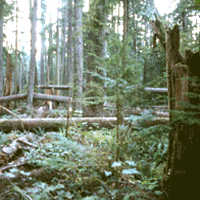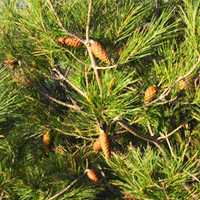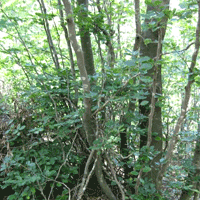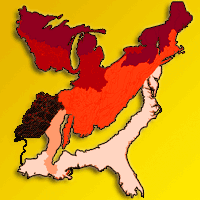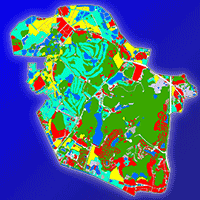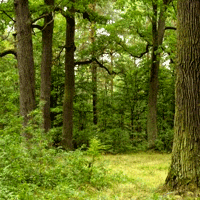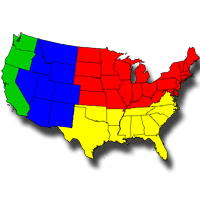
Benefits of a strategic national forest inventory to science and society: the USDA Forest Service Forest Inventory and Analysis program
iForest - Biogeosciences and Forestry, Volume 1, Issue 1, Pages 81-85 (2008)
doi: https://doi.org/10.3832/ifor0345-0010081
Published: Feb 28, 2008 - Copyright © 2008 SISEF
Commentaries & Perspectives
Abstract
Forest Inventory and Analysis, previously known as Forest Survey, is one of the oldest research and development programs in the USDA Forest Service. Statistically-based inventory efforts that started in Scandinavian countries in the 1920s raised interest in developing a similar program in the U.S. The U.S. Congress established the research branch of the U.S. Forest Service in 1928, shortly after Dr. Yrjö Ilvessalo, leader of the first Finnish national forest inventory, met with President Calvin Coolidge. Congress charged the Forest Service to find “facts as may be necessary in the determination of ways and means to balance the timber budget of the United States”. As a result, Forest Survey maintained a timber focus for much its history. As society’s interest in forests changed over time, so did information needs. Conflicts over resource allocation and use could not be resolved without up-to-date knowledge of forest status and trends. In response to society’s needs, the Forest Inventory and Analysis program has evolved from Forest Survey to address diverse topics such as forest health, carbon storage, wildlife habitat, air pollution, and invasive plants, while continuing its mandate to monitor the Nation’s timber supply. The Forest Inventory and Analysis program collects data on all land ownerships on an annual basis. The data are used to develop reports on a regular basis; reports and raw data are available to the public at no cost. The data are also used by scientists in a growing number of applications. A short history of the Forest Survey is presented with several examples of current research based on Forest Inventory and Analysis data.
Keywords
Forest Inventory, FIA, Silviculture, Disturbance, United States
Authors’ Info
Authors’ address
USDA Forest Service, Rocky Mountain Research Station - 507 25th Street, Ogden, Utah (USA)
Corresponding author
Paper Info
Citation
Shaw JD (2008). Benefits of a strategic national forest inventory to science and society: the USDA Forest Service Forest Inventory and Analysis program. iForest 1: 81-85. - doi: 10.3832/ifor0345-0010081
Paper history
Received: Dec 29, 2005
Accepted: Feb 07, 2006
First online: Feb 28, 2008
Publication Date: Feb 28, 2008
Publication Time: 25.03 months
Copyright Information
© SISEF - The Italian Society of Silviculture and Forest Ecology 2008
Open Access
This article is distributed under the terms of the Creative Commons Attribution-Non Commercial 4.0 International (https://creativecommons.org/licenses/by-nc/4.0/), which permits unrestricted use, distribution, and reproduction in any medium, provided you give appropriate credit to the original author(s) and the source, provide a link to the Creative Commons license, and indicate if changes were made.
Web Metrics
Breakdown by View Type
Article Usage
Total Article Views: 60583
(from publication date up to now)
Breakdown by View Type
HTML Page Views: 49284
Abstract Page Views: 3621
PDF Downloads: 6350
Citation/Reference Downloads: 75
XML Downloads: 1253
Web Metrics
Days since publication: 6491
Overall contacts: 60583
Avg. contacts per week: 65.33
Citation Metrics
Article Citations
Article citations are based on data periodically collected from the Clarivate Web of Science web site
(last update: Mar 2025)
Total number of cites (since 2008): 7
Average cites per year: 0.39
Publication Metrics
by Dimensions ©
Articles citing this article
List of the papers citing this article based on CrossRef Cited-by.
References
A historical perspective of the Forest Vegetation Simulator. In: Proceedings - Forest Vegetation Simulator conference, Feb. 3-7, 1997 (Teck R, Moeur M and Adams J eds). USDA For. Serv. Gen. Tech. Rep. INT-373. pp 3-4.
Gscholar
Aspen stand structure and composition in the western U.S.: implications for management. Proceedings: Canadian Institute of Forestry / Society of American Foresters Joint 2004 Annual General Meeting and Convention. October 2-6, 2004. Edmonton, Alberta, Canada. Bethesda, Maryland: Society of American Foresters. [published on CD-ROM].
Online | Gscholar
USDA scientists estimate Katrina destroyed 19 billion board feet of timber. The E-Forester, September 19, 2005 [distributed by email].
Gscholar
USDA Forest Service reports significant damage by hurricane Katrina to public and private timberland. News Release No. 0376.05 (September 15, 2005). U.S. Department of Agriculture, Washington, D.C.
Gscholar
The history of the Forest Survey program in the United States. In: Proceedings of the IUFRO Centennial Meeting, August 31 - September 4, 1992, Berlin, Germany (Preto G, Koch B eds). Japan Society of Forest Planning Press, Tokyo University of Agriculture, pp. 19-27.
Gscholar
User’s guide to the Stand Prognosis Model. USDA For. Serv. Gen. Tech. Rep. INT-133. USDA Forest Service, Intermountain Forest and Range Experiment Station, Ogden, Utah.
Gscholar



